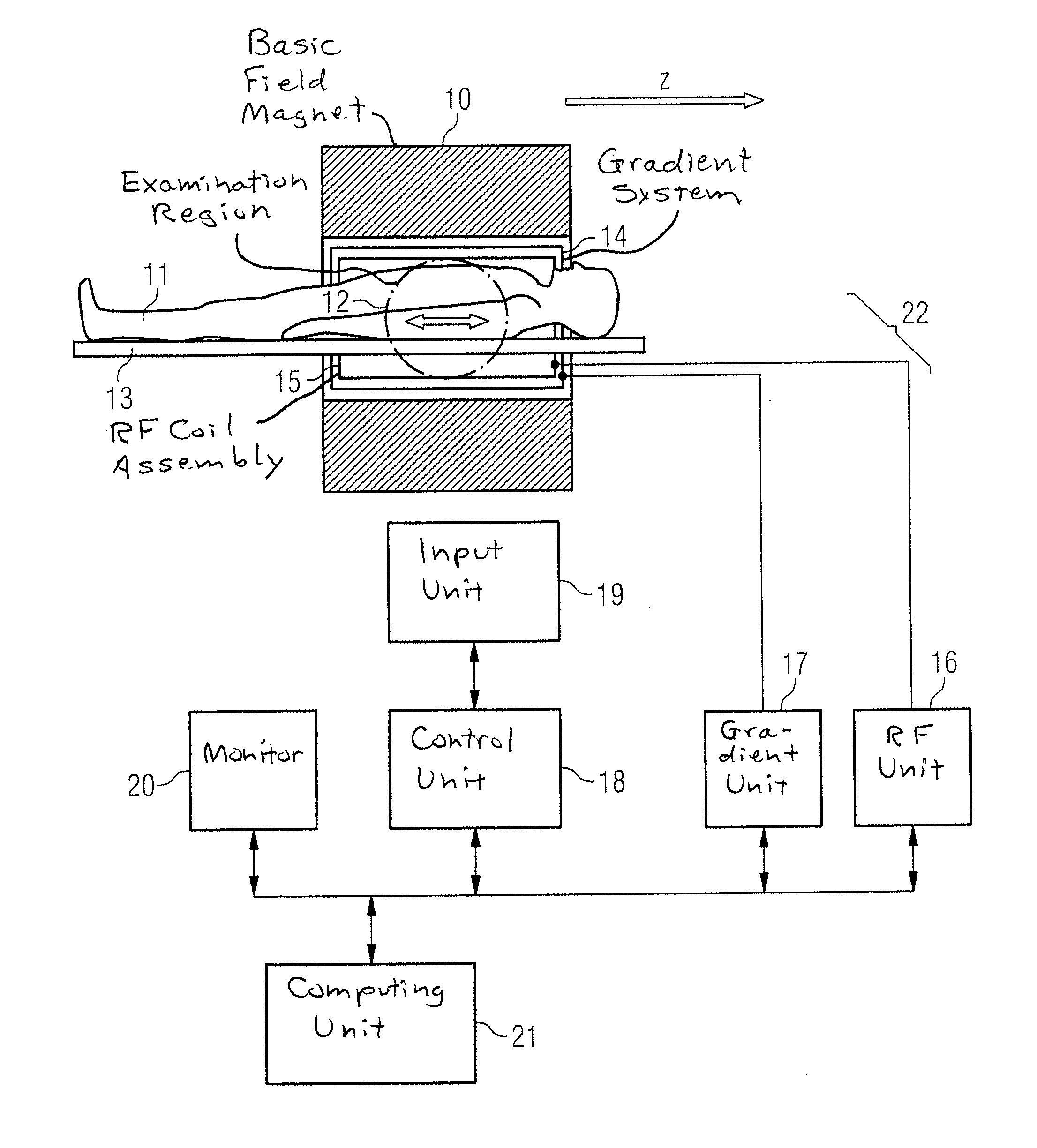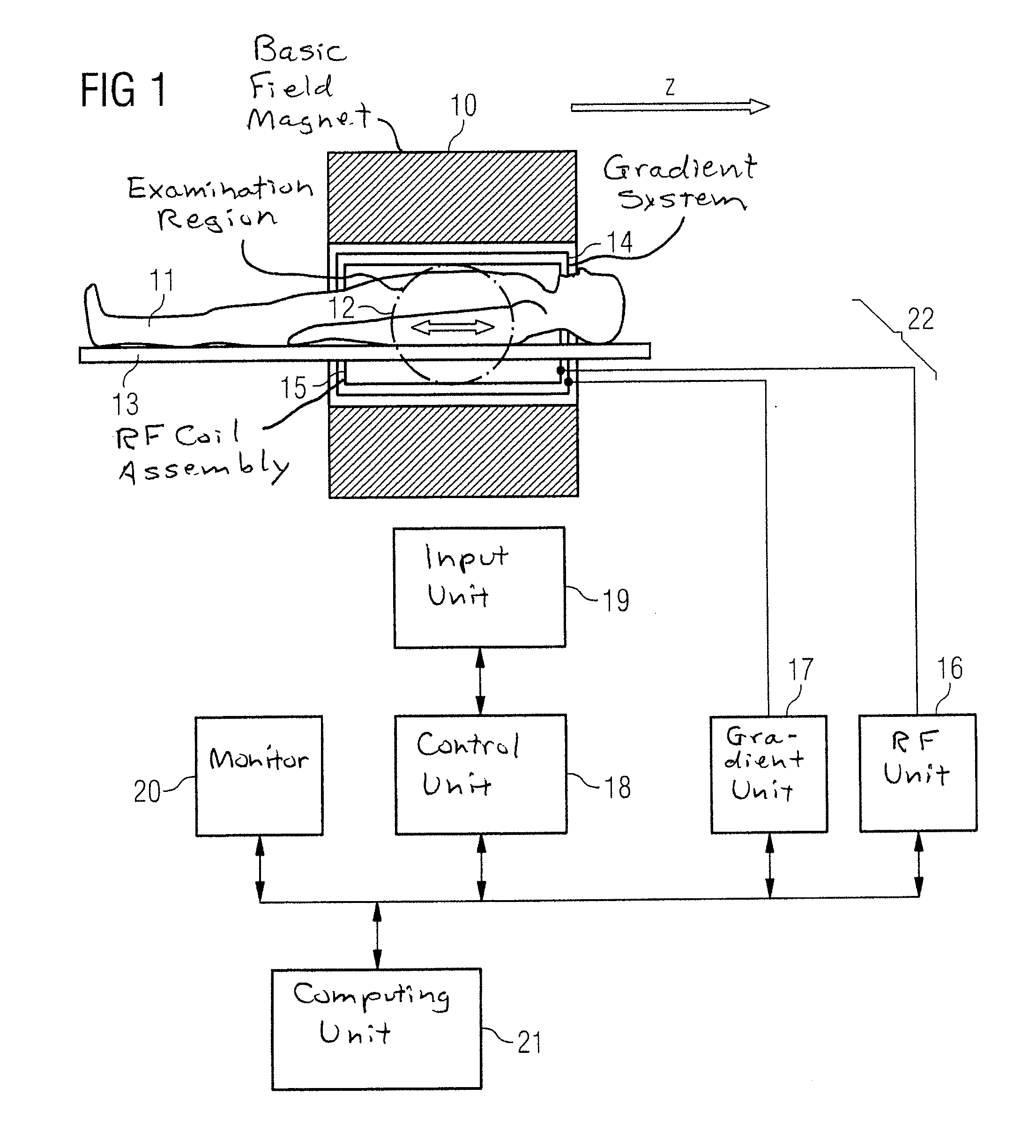Magnetic resonance method and apparatus for time-resolved acquisition of magnetic resonance data
a magnetic resonance and time-resolved technology, applied in the field of time-resolved magnetic resonance data acquisition and magnetic resonance imaging scanners, can solve the problem of requiring a long computation period
- Summary
- Abstract
- Description
- Claims
- Application Information
AI Technical Summary
Benefits of technology
Problems solved by technology
Method used
Image
Examples
Embodiment Construction
[0039]FIG. 1 schematically shows a magnetic resonance imaging scanner, which is designed to acquire time-resolved magnetic resonance data. A magnetic resonance imaging (MRI) scanner of this sort contains a basic field magnet 10 for generating a polarization field B0. An object being examined, in this case a person 11, may be transported on a table 13 into the magnet 10, as is schematically shown by the arrow. By moving or driving the table 13, the person 11 can be transported through the examination region 12 of the magnetic resonance imaging scanner, with magnetic resonance signals from the examination region 12 then being acquired. The magnet 10 may be designed to be significantly shorter in the lengthwise direction (z-axis), than is shown in FIG. 1.
[0040]The MRI scanner furthermore has a gradient system 14 for generating magnetic field gradients which are use for imaging and spatial coding. A spatial coding may be obtained through frequency coding in the lengthwise or z axis, whe...
PUM
 Login to View More
Login to View More Abstract
Description
Claims
Application Information
 Login to View More
Login to View More - R&D
- Intellectual Property
- Life Sciences
- Materials
- Tech Scout
- Unparalleled Data Quality
- Higher Quality Content
- 60% Fewer Hallucinations
Browse by: Latest US Patents, China's latest patents, Technical Efficacy Thesaurus, Application Domain, Technology Topic, Popular Technical Reports.
© 2025 PatSnap. All rights reserved.Legal|Privacy policy|Modern Slavery Act Transparency Statement|Sitemap|About US| Contact US: help@patsnap.com



